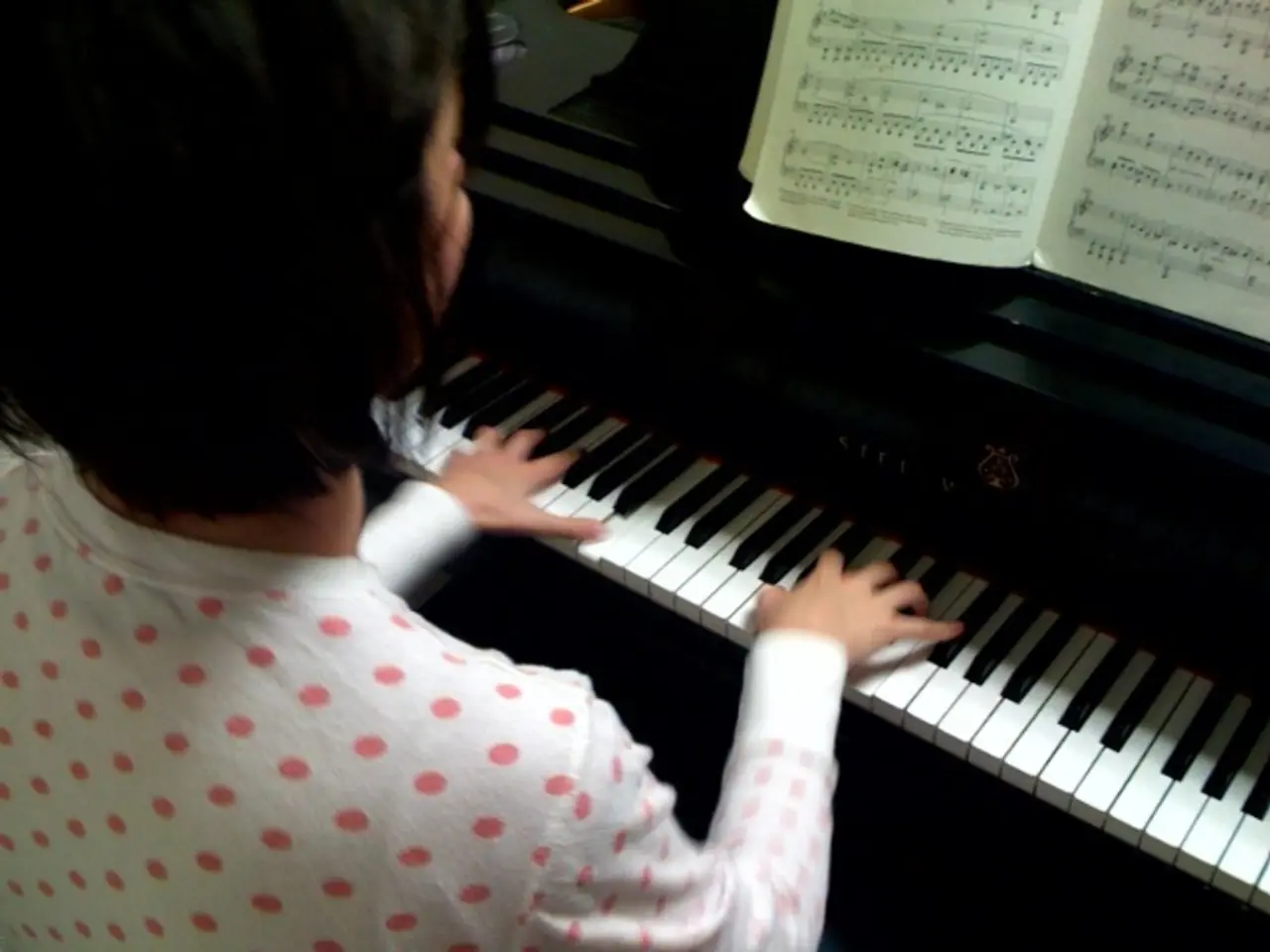Nervous Playing at the Piano: Inside the World of Performance Anxiety
Transforming Performance Anxiety into an Asset for Pianists
Performance anxiety is a common issue faced by musicians, including pianists, and is often viewed as a liability. However, a new approach suggests reframing it as an asset that can enhance performance, rather than a hindrance.
According to an article published at http://www.bulletproofmusician.com/how-to-make-performance-anxiety-an-asset-instead-of-a-liability/, the author, who falls under the category of performers who experience minor nervousness, emphasizes the importance of this perspective shift.
Nervousness, whether minor or causing negative effects on a performer's ability to deliver their best, can be regulated through a variety of techniques. Controlled breathing, meditation, and visualization help channel nervous energy into a positive force for performance. By accepting anxiety as a normal and universal experience, performers can reduce its negative impact and build trust in themselves, transforming apprehension into confidence over time.
Supporting strategies include breath control and mindfulness, visualization, incremental exposure, and self-acceptance and rational thinking. Practicing diaphragmatic breathing and meditation helps calm the body and mind, reducing fear while improving phrasing and stage presence through better respiratory control. Mentally rehearsing performances strengthens confidence and reduces uncertainty, making anxiety a sign of preparedness rather than panic.
Playing short, supportive performances for trusted friends or recording oneself reduces fear of judgment and normalizes performing anxiety, helping pianists to reframe it as a manageable challenge rather than a threat. Cognitive approaches like Rational Emotive Behavior Therapy (REBT) encourage replacing perfectionism and fear of others’ opinions with unconditional self-acceptance, which lowers performance anxiety and supports a more positive self-image.
In summary, performance anxiety can be harnessed as an alert system that primes the pianist’s focus and energy, provided it is managed through self-care, cognitive reframing, and gradual exposure to performance situations. This shift from avoidance to active engagement helps pianists transform anxiety into a performance asset rather than a liability.
The author is also aware of the challenges young musicians face when performing in public for the first time and encourages them to approach performance anxiety as an opportunity for growth rather than a source of fear. By adopting these strategies, musicians can learn to embrace their anxiety and use it to their advantage, ultimately leading to improved performance and increased confidence.
Working on education-and-self-development, focusing on personal-growth strategies like controlled breathing, meditation, and visualization can help pianists manage performance anxiety, transforming it from a liability into an asset for their entertainment-based career. By embracing music as a medium for both expression and growth, pianists can use their anxiety as a tool for enhancing their performance.




